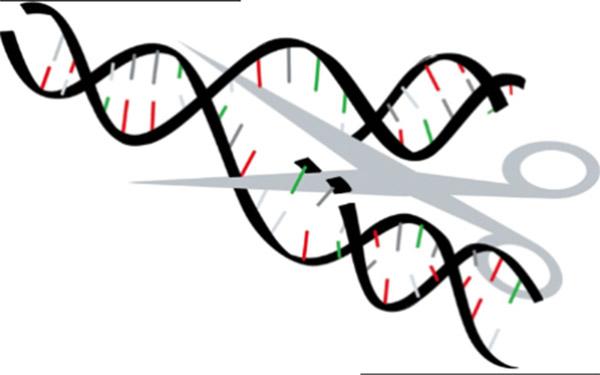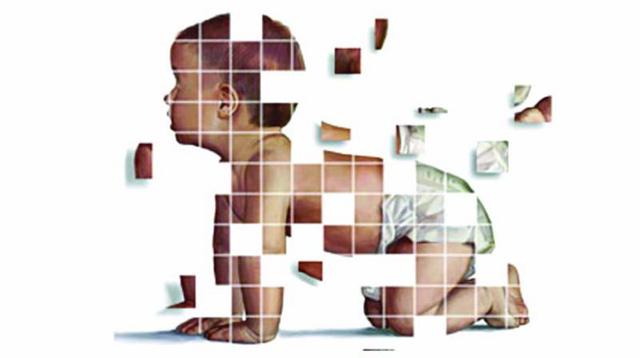You are here
Human embryos ‘edited’ from potentially fatal gene mutation
By Los Angeles Times (TNS) - Aug 06,2017 - Last updated at Aug 06,2017

Photo courtesy of hercampus.com
Using a powerful gene-editing technique, scientists have rid human embryos of a mutation that causes an inherited form of heart disease often deadly to healthy young athletes and adults in their prime.
The experiment marks the first time that scientists have altered the human genome to ensure a disease-causing mutation would disappear not only from the DNA of the subject on which it’s performed, but from the genes of his or her progeny as well.
The controversial procedure, known as “germ-line editing”, was conducted at Oregon Health & Science University using human embryos expressly created for the purpose. It was reported in the journal Nature.
The new research comes less than six months after the National Academies of Science, Engineering and Medicine recommended that scientists limit their trials of human germ-line editing to diseases that could not be treated with “reasonable alternatives” — at least for now.
In a bid to make the experiment relevant to real-life dilemmas faced by parents who carry genes for inherited diseases, the researchers focused their editing efforts on a mutation that causes inherited hypertrophic cardiomyopathy.
In this genetic condition, a parent who carries one normal and one faulty copy of a the MYBPC3 gene has a 50-50 chance of passing that mutation on to his or her offspring. If the child inherits the mutation, his or her heart muscle is likely to grow prematurely weak and stiff, causing heart failure and often early death.
In diseases where one parent carries such an “autosomal dominant” mutation, a couple will often seek the assistance of fertility doctors to minimise the risk of passing such a mutation on to a child. A woman’s egg production is medically stimulated, and eggs and sperm meet in a lab — a process called in vitro fertilisation. Then embryologists inspect the resulting embryos, cull the ones that have inherited an unwanted mutation, and transfer only unaffected embryos into a woman’s uterus to be carried to term.
In the new research, researchers set out to test whether germ-line gene editing could make the process of choosing healthy embryos more effective and efficient by creating more of them.
In the end, their experiment showed it could. The targeted correction of a disease-causing gene carried by a single parent “can potentially rescue a substantial portion of mutant human embryos, thus increasing the number of embryos available for transfer”, the authors wrote in Nature. Co-author Dr Paula Amato, an Oregon Health & Science University (OHSU) professor of obstetrics and gynaecology, said the technique “could potentially decrease the number of cycles needed for people trying to have children free of genetic disease” if it’s found safe for use in fertility clinics.
Along the way, though, many of the researchers’ findings were scientifically surprising. Long-feared effects of germ-line editing, including collateral damage to “off-target” genetic sequences, scarcely materialised. And “mosaicism”, a phenomenon in which edited DNA appears in some but not all cells, was found to be minimal.
The study’s lead author, OHSU biologist Shoukhrat Mitalipov, called these “exciting and surprising moments”. But he cautioned that “there is room to improve” the techniques demonstrated to produce mutation-free embryos. As for conducting human clinical trials of the germ-line correction, he said those would have to wait until results showed a near-perfect level of efficiency and accuracy, and could be limited by state and federal regulations.
Eventually, Mitalipov said, such germ-line gene editing might also make it easier for parents who carry other gene mutations that follow a similar pattern of inheritance — including some that cause breast and ovarian cancers, cystic fibrosis and muscular dystrophy — to have healthy children who would not pass those genes to their own offspring.
“There is still a long road ahead,” predicted Mitalipov, who heads the Centre for Embryonic Cell and Gene Therapy at the Portland university.
The research drew a mix of praise and concern from experts in genetic medicine.
Dr Richard O. Hynes, who co-chaired the National Academies’ report issued in February, called the new study “very good science” that advances understanding of genetic repair on many fronts. Hynes, who was not involved with the latest research effort, said he was “pleasantly surprised” by researchers’ “clever modifications” and their outcomes.
“It’s likely to become feasible, technically — not tomorrow, not next year, but in some foreseeable time. Less than a decade, I’d say,” said Haynes, a biologist and cancer researcher at MIT and the Howard Hughes Medical Institute.
University of California, Berkeley molecular and cell biologist Jennifer Doudna, one of pioneers of the CRISPR-Cas9 gene-editing technique, acknowledged the new research highlights a prospective use of gene editing for one inherited disease and offers some insights into the process.
But Doudna questioned how broadly the experiment’s promising results would apply to other inherited diseases. She said she does not believe the use of germ-line editing as a means to improve efficiency at infertility clinics meets the criteria laid out by the National Academies of Science, which urged that the techniques only be explored as treatment for diseases with “no reasonable alternative”.
“Already, 50 per cent of embryos would be normal,” said Doudna. “Why not just implant those?”
Doudna said she worried that the new findings “will encourage people to proceed down this road” before the scientific and ethical implications of germ-line editing have been fully considered.
“A large group of experts concluded that clinical use should not proceed until and unless there’s broad societal consensus, and that just hasn’t happened,” Doudna said. “This study underscores the urgency of having those debates. Because it’s coming.”
Related Articles
Scientists should be allowed to alter a person’s DNA in ways that will be passed on to future generations, but only to prevent serious and s
HONG KONG — A scientist in China claims to have created the world’s first genetically-edited babies, in a potentially ground-breaking and co
OSLO/STOCKHOLM — The announcement of the Nobel Medicine Prize on Monday opens an unusual 2019 Nobel season in which two literature laureates














